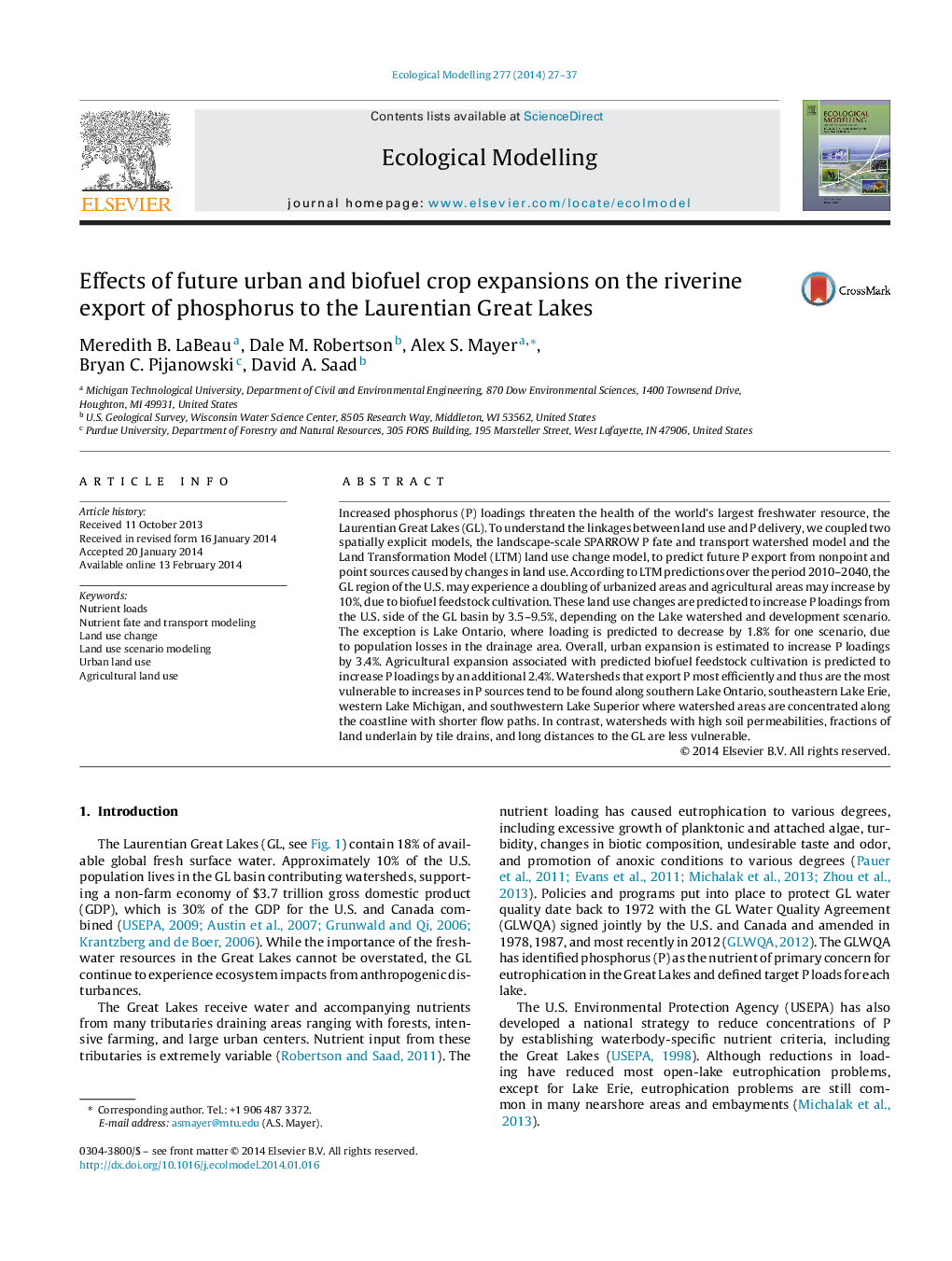| Article ID | Journal | Published Year | Pages | File Type |
|---|---|---|---|---|
| 4375984 | Ecological Modelling | 2014 | 11 Pages |
•Phosphorous loads are predicted to 2040 from Great Lakes tributaries.•Land use change will produce increases in phosphorous loads of up to 9.5%.•Watersheds most vulnerable to phosphorous source increases are identified.
Increased phosphorus (P) loadings threaten the health of the world's largest freshwater resource, the Laurentian Great Lakes (GL). To understand the linkages between land use and P delivery, we coupled two spatially explicit models, the landscape-scale SPARROW P fate and transport watershed model and the Land Transformation Model (LTM) land use change model, to predict future P export from nonpoint and point sources caused by changes in land use. According to LTM predictions over the period 2010–2040, the GL region of the U.S. may experience a doubling of urbanized areas and agricultural areas may increase by 10%, due to biofuel feedstock cultivation. These land use changes are predicted to increase P loadings from the U.S. side of the GL basin by 3.5–9.5%, depending on the Lake watershed and development scenario. The exception is Lake Ontario, where loading is predicted to decrease by 1.8% for one scenario, due to population losses in the drainage area. Overall, urban expansion is estimated to increase P loadings by 3.4%. Agricultural expansion associated with predicted biofuel feedstock cultivation is predicted to increase P loadings by an additional 2.4%. Watersheds that export P most efficiently and thus are the most vulnerable to increases in P sources tend to be found along southern Lake Ontario, southeastern Lake Erie, western Lake Michigan, and southwestern Lake Superior where watershed areas are concentrated along the coastline with shorter flow paths. In contrast, watersheds with high soil permeabilities, fractions of land underlain by tile drains, and long distances to the GL are less vulnerable.
